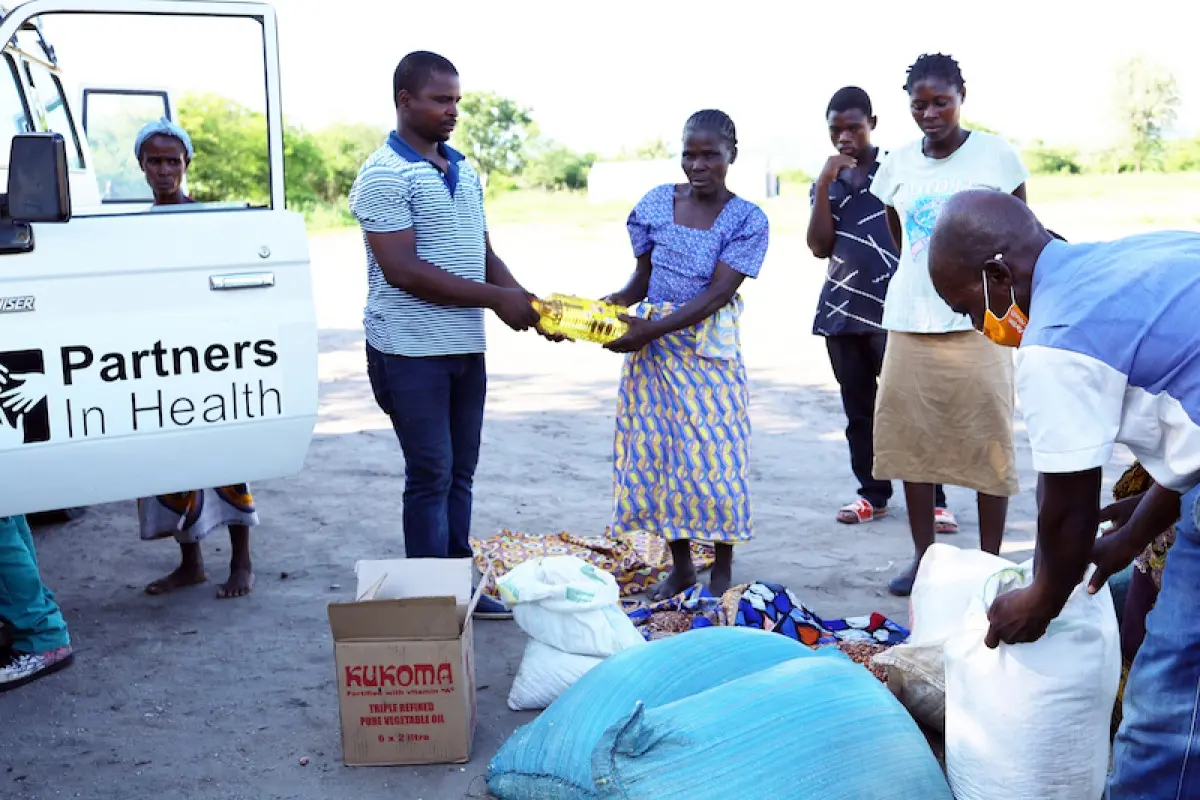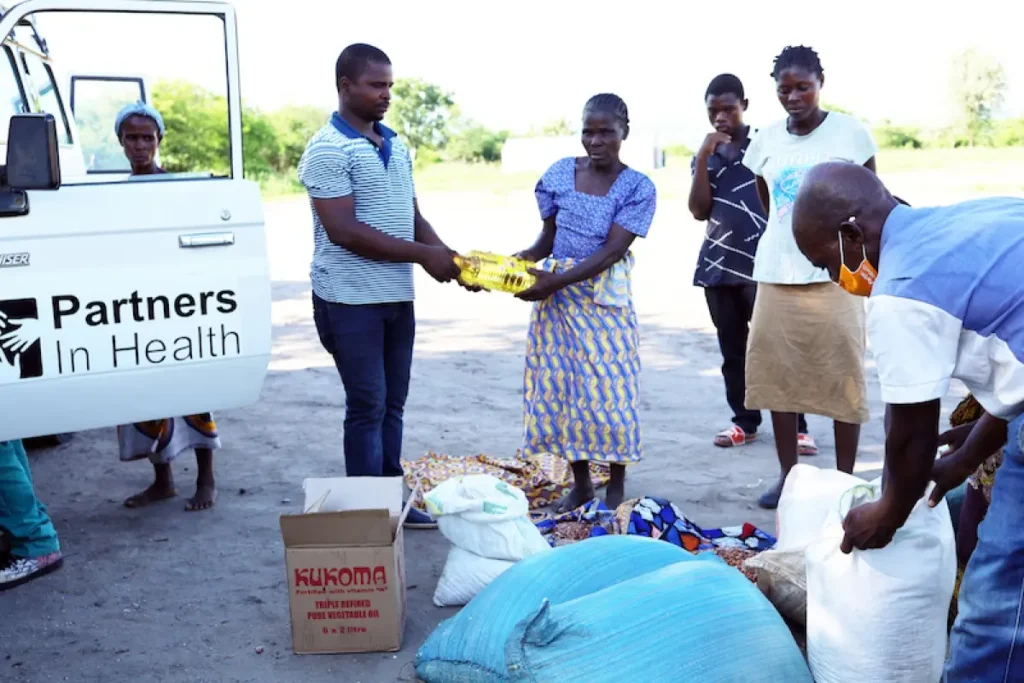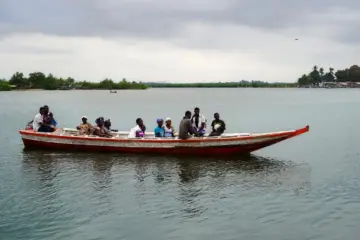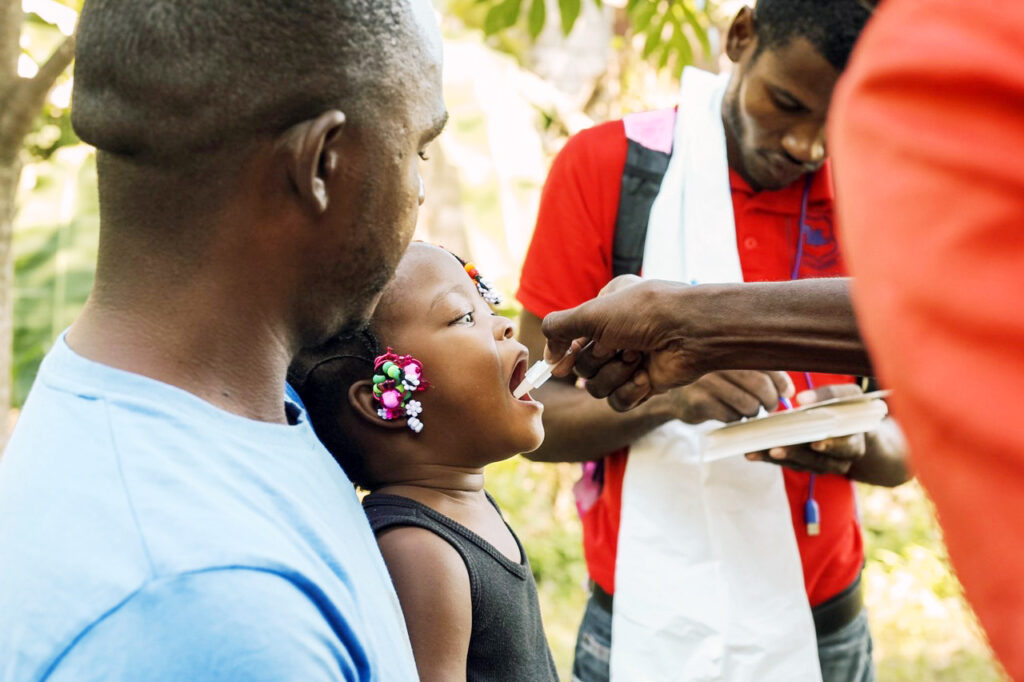How Climate Change Impacts Health for Impoverished, Vulnerable Communities

Extreme weather, food insecurity, infectious diseases all driven by environmental degradation
Posted on May 9, 2022

The connections between climate change and health are complex and far-reaching, and their resulting repercussions are getting worse fast. To better understand the many implications of our warming planet, we spoke with Dr. Kelsey Ripp, internist and pediatrician, and University of Washington Global and Rural Health Fellow at the University of Global Health Equity (UGHE) in Rwanda, a Partners In Health-supported university.
Ripp, who is currently based at UGHE’s Center for One Health and the Butaro District Hospital, is working to integrate planetary health and other climate-related topics into the UGHE curriculum. She has studied the links between health and the environment throughout her career, with an interest in social and climate justice, influenced early on by Hurricane Katrina and, more recently, her work in Alaska, where she witnessed how the loss of subsistence hunting and fishing impacted people’s mental health as well as food security in the community.
Here, Ripp speaks broadly about issues ranging from rethinking medical education to better address climate change and how poverty makes people more vulnerable to global heating. She also explains the One Health program at UGHE, a multidisciplinary, collaborative approach to improving health outcomes by focusing on the intersection of animal, human, and environmental health.
How would you explain the relationship between human health, climate, and environmental change?
At its simplest, the air we breathe, the water we drink, the food we eat, all comes from our environment. Our sophisticated technologies and complex built environments can work to obscure this essential fact but ultimately, air, food, water, and even diseases that come from the environment all very much affect our health. From that basic standpoint, our health is integrally related to the health of the environment.
Global environmental change refers to damage to essential planetary systems which have widespread effects, including climate change, biodiversity loss, freshwater depletion, and environmental contamination, such as water or air pollution. These are changes that are human imposed or human-initiated that have effects throughout global ecosystems.
Let’s go on to specific examples and start with natural disasters, because that’s what most people think about in relation to climate change.
Climate change directly affects the frequency, intensity, and distribution of extreme weather events or weather hazards, including hurricanes, droughts, or floods. Once you impose them on a population, they can cause natural disasters. But natural disasters are not really natural, what actually creates human disaster is human and social vulnerability. Populations have different degrees of vulnerability to disasters because of social, economic, or health differences, and these factors are also affected by climate change.
I’m not an expert on the cyclone that happened in Malawi or on Malawi specifically, but think of that as an example. Cyclones are more likely to occur because of climate change. But climate change also has effects on that population at baseline before they even had that cyclone. If changes in weather patterns like drought or flooding impair crop yields—particularly in areas with high levels of poverty without other systems in place to ensure populations have alternative access to food—rates of malnutrition will increase, particularly in children. And if a community is already malnourished, this can make them more vulnerable to the effects of a severe cyclone—on food and other health and economic outcomes.
Another example would be drinking water contamination after the cyclone from runoff, sewage, or saltwater. If people already have precarious access to clean water, and this is worsening due to freshwater depletion, then after the cyclone when water contamination occurs, the population is less able to find alternative sources of clean water, intensifying the health effects of the disaster.
Malaria incidence is anticipated to shift due to climate change, with some areas experiencing an increase due to warming temperatures or precipitation. This impacts the baseline health of a community. At the same time, cyclones have the potential to increase malaria risk in certain areas by increasing areas of standing water where mosquitos breed. Thus, climate change can increase the risk of certain infectious diseases, like malaria, in both the short- and long-term.
All of these things can put people’s health at risk at baseline. And then that extreme weather event just makes it even worse and leads to disaster. We often call climate change a threat multiplier, because it worsens various health problems by exacerbating other widespread contributors to ill health, such as poverty. And not only does it exacerbate existing health problems, but climate change also increases the risk of developing new health problems, and creates difficulties for prevention and treatment of these problems.
Can you speak about any other examples of consequences of climate change that affect health?
Alaska, and really the Arctic in general, is experiencing global warming and rising temperatures, much faster than the global averages. That has numerous effects on the ecosystem.
Many Alaska Native communities rely closely on fishing and hunting for a lot of their food intake and, culturally, are closely linked to the environment. These rural communities, in particular, are seeing a ton of changes. At its most extreme, there are villages that will have to, or have already had to, completely relocate.
This is often related to erosion or lack of sea ice, things that make it physically unsafe to live there. The way that food is stored can be affected by changes in temperature, and so that can increase the risk of food-borne illness, like food poisoning, or diseases, including zoonotic diseases that are passed from animals to humans. The mental health effects of these climate-related changes are enormous. People and communities who have lived there for thousands of years needing to plan to move their entire lives and homes have very significant, though sometimes hidden, mental health consequences.
How does poverty factor into all of this?
Poverty creates vulnerability to the effects of climate change. An example would be urban areas and heatwaves. People with lower incomes and fewer resources tend to live in the more densely populated urban areas that don’t have tree cover or green spaces. And these specific locations are significantly hotter, even up to 10 degrees Fahrenheit or higher, than the suburbs. This is called the urban heat island effect. And if there is a heatwave, not only will these people be exposed to higher temperatures, but they would have less access to cooling shelters, air conditioning, or other resources to prevent the health effects of extreme heat.
In populations that are already experiencing food insecurity, which is closely associated with poverty, climate change can worsen food insecurity by changes in crop yields or impaired health of animals used for food. This contributes to a cycle of poverty as well.
Poverty tends to focus energy on survival—often short-term survival—and less energy, effort, and resources are available to improve or protect the environment. An example would be illegal subsistence hunting for food. This is often done out of need and desperation for food, but sometimes the depiction of this gets twisted and the poor end up getting blamed for these actions. But really poverty constrains their choices and also limits their ability and energy to invest in protecting their environment, which creates a vicious cycle.
How is disease emergence connected to environmental change?
Loss of biodiversity affects the emergence of zoonotic diseases, which are passed from animals to humans, like SARS, COVID-19, Ebola, etc. In simple terms, if you have a healthy forest with a whole bunch of different species living there and then you have a pathogen, that pathogen may have a lot of different animals to infect. It hangs out in its normal system and doesn’t spread. But if you have deforestation and people are starting to settle in that forest and you’re killing off some of those species, that pathogen has to find new hosts, and humans might be the host. It’s not always directly related to changes in the climate, but all these environmental changes are very interrelated.
Tell us about “One Health” and how it’s connected to climate change?
It’s not a new concept. Scientists hundreds of years ago, and long before them many indigenous cultures, then and still, use this holistic, integrated way of thinking about health that sees human, animal, and ecosystem health as integrally connected.
So many of the big health issues—antimicrobial resistance, neglected tropical diseases, unsustainable food systems, not to mention the health consequences of climate change and biodiversity loss—are all massive and complex problems that require a different approach.
One Health is key to studying and designing solutions to climate change-related human health effects, since it recognizes that climate change affects animals too, and animals are integral to human health. One Health is an approach to emphasize that we’re all connected and only by recognizing this and acting with this understanding can we begin to design meaningful solutions.
How do you think medical education should change to address climate and health?
Clinicians don’t need to be climate scientists. They don’t need to be infectious disease experts. But they need to be aware that there are environmental changes going on that can affect human health. We need to come up with some skills that clinicians should be able to perform, like being able to take a good animal and environmental exposure history, for example and then making sure we teach this to our students. Asking questions like, “Do you have any animals in your home? Are they sick or well? Or have you had any environmental exposures?” Physicians should be taught to consider whether they have a patient with exposure to indoor or outdoor air pollution.
It’s also an attitudinal shift. Perhaps that’s the most important piece of it. Really understanding and acknowledging how human health depends on the environment and animal health.
What are some solutions to such massive, complex problems?
From a social justice standpoint, it’s really important that solutions need to be collaborative, and equity-focused. And in turn, solutions need to be locally focused with community-placed effects.
At UGHE we are focusing on One Health research and education. Particularly within education, which is where my focus is, we are building long-term capacity by educating our students, both within the Masters in Global Health Delivery Program (MGHD), which now has a concentration in One Health, and also the medical students in the MBBS/MGHD program about the effects of environmental change on health. These students will be agents of change and will help to create more equity in who is doing the research and coming up with the solutions.
Other solutions include making health care systems more climate-resilient. For example, for a health system that’s in an area where there are hurricanes, this entails building infrastructure that can withstand bigger hurricanes, while minimizing the environmental impact, as well as creating early warning systems for disasters. Also, building a climate-resilient health care system means trying to figure out ways to reduce its carbon footprint and reduce waste.
In addition, we need to take into consideration the environmental impacts of interventions and always look out for environmental co-benefits. If you invest in building more bike lanes so that more people can safely bike, fewer people are driving. This can also directly improve people’s health because they’re being less sedentary while having both human and planetary health impacts by reducing air pollution and reducing carbon emissions. This is an example of an intervention that has co-benefits both for the climate and for human health.
Originally published on pih.org



